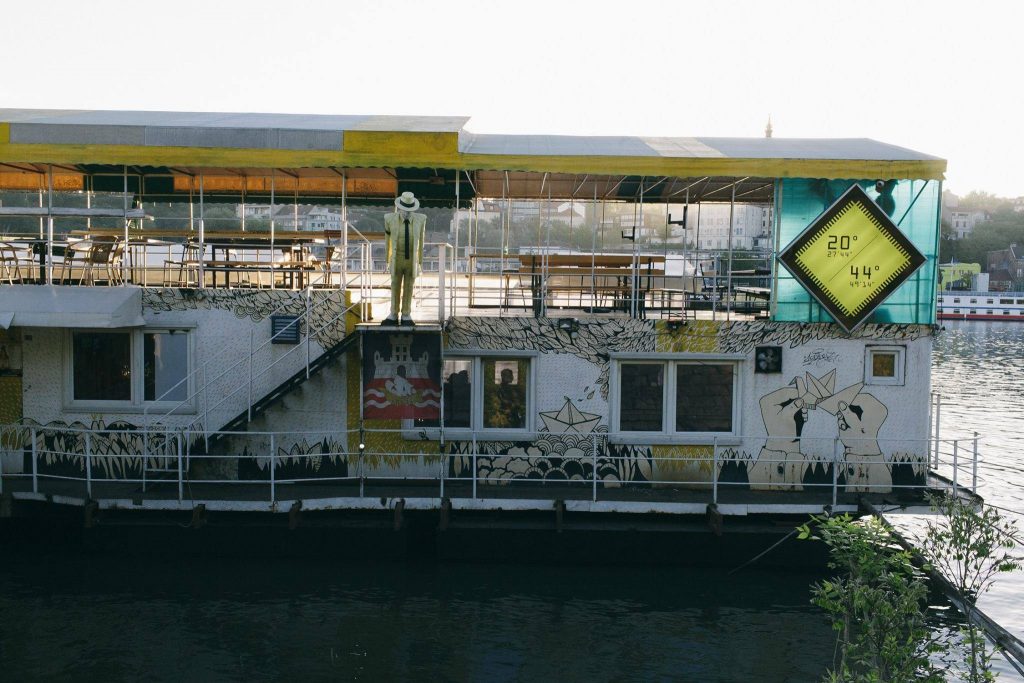Word of Mouth: Belgrade
Exploring the Serbian capital from refined roof terraces to reimagined industrial spaces

Over the past few years, the Serbian capital Belgrade has emerged as one of the most exciting destinations in Europe. Owing to its cheap prices, 24-hour party culture and plenty of dilapidated but beautiful architecture, Belgrade is often described as “the new Berlin” by those who fear that gentrification has stripped the old Berlin of the permissive hedonism for which it was so famous in the 1990s. Belgrade, which still hasn’t really recovered from the aftershocks of the Yugoslav wars (even though those conflicts ended 20 years ago) still retains that low-level lawlessness that often fosters great nightlife; however, there’s also an altogether more refined side to the city that usually goes undetected by outsiders.
When there, be sure to visit the neighborhood of Kosančićev Venac, which stands out as a small oasis of beauty in a town that spent the past 30 years in perpetual crisis. Dubbed “Little Paris” by locals, it’s one of the few city quarters that wasn’t completely razed by German bombers during World War II. Its early-20th century architecture carries a hint of Vienna and its charming, narrow streets are dotted with cafes and boutiques. It’s located off Knez Mihailova (Belgrade’s main pedestrian zone), but there’s plenty more to enjoy in this city—and some of our favorite spots are listed here.

Square Nine Hotel
Square Nine is situated right in the epicenter of the city, opposite the Student’s Park, and is probably the most stylish premises in Belgrade. Even if you don’t book a room in this chic five-star hotel, it’s worth stopping by to enjoy a cocktail in the gorgeous lobby bar, which is decorated with handcrafted mid-century Danish furniture. Up on the seventh-floor roof terrace, visitors can dine on modern Japanese cuisine at the well-respected Ebisu, while enjoying a panoramic view of the city. And while there’s coffee available at the hotel, we recommend taking the 14-minute walk to Pržionica, located near the banks of the Danube, for arguably the best coffee in town. On a Saturday morning, you’ll find local Belgraders leaning against the long white countertop that runs through the cafe, knocking back espressos made from beans that are roasted on-site. One of the owners is a well-known DJ in Belgrade, so the music never disappoints.

Cveće Zla
Cveće Zla translates to “Flowers of Evil” and is quite possibly Belgrade’s hippest restaurant. Located a couple of miles away from the city center in the nouveau-riche neighborhood of Vračar, its owner is a well-known restaurateur whose ventures have consistently been highly regarded. The interior is dominated by black marble and parquet, and contemporary art hangs from the walls, which helps give Cveće Zla the feel of a Bond villain’s apartment. It’s a great place to people watch while feasting on a modern European take on Serbian classics.

Museum of Contemporary Art
Belgrade’s Museum of Contemporary Art is located on the left bank of the Sava river, opposite the city’s downtown. Recognizable for its angular facade (perhaps more so than the works within), the museum was constructed in 1965 and is an example of striking and celebrated Yugoslav modernist architecture. It recently reopened following a decade-long renovation and is currently home to a sprawling retrospective of the works of Marina Abramović (who was born in the city). The permanent collection is also a fantastic way for visitors to explore Yugoslav history through visual art.

Koozmetik
Koozmetik is a local manufacturer of skincare and grooming products that are entirely handmade using all-natural ingredients. The brand’s use of recycled packaging means they’re better for the Earth too. The Koozmetik store is located in Upper Dorćol, which is one of the city’s most charming neighborhoods and a great place to take a stroll after picking up a souvenir to commemorate your visit to the Serbian capital.

Cetinjska 15
Cetinjska 15 used to be the home of one of Belgrade’s largest breweries (until it went bankrupt in 2015) and since then has been transformed into a cluster of dive bars that really illustrate why Belgrade is so often compared to Berlin: like the German capital in the 1990s, Belgrade has mastered the art of turning industrial decay into dynamic nightlife. Cetinjska is the perfect first stop on a night out, where you can sink a few affordable drinks before moving on to one of the city’s many clubs. Zaokret and LIFT are both great drinking holes, but Dim is the real jewel in Cetinjska’s crown: plush velvet seating and brass details are juxtaposed against raw concrete walls that give it the feel of a post-apocalyptic Studio 54.

Klub 20/44
A trip to Belgrade wouldn’t be complete without a visit to 20/44. This floating nightclub is housed on a barge on the Sava river (within eyesight of the Museum of Contemporary Art) and is a local institution that’s consistently listed as one of the best clubs on the planet. The Boat (as it’s affectionately known to its regulars) consists of an intimate main room that backs up to an open-air terrace in the summer months that offers a postcard view of downtown Belgrade. Unlike many clubs in the city, which serve as places to get dolled up and be seen, 20/44 is for those who want to rave deep into dawn.
Hero image courtesy of Square Nine












